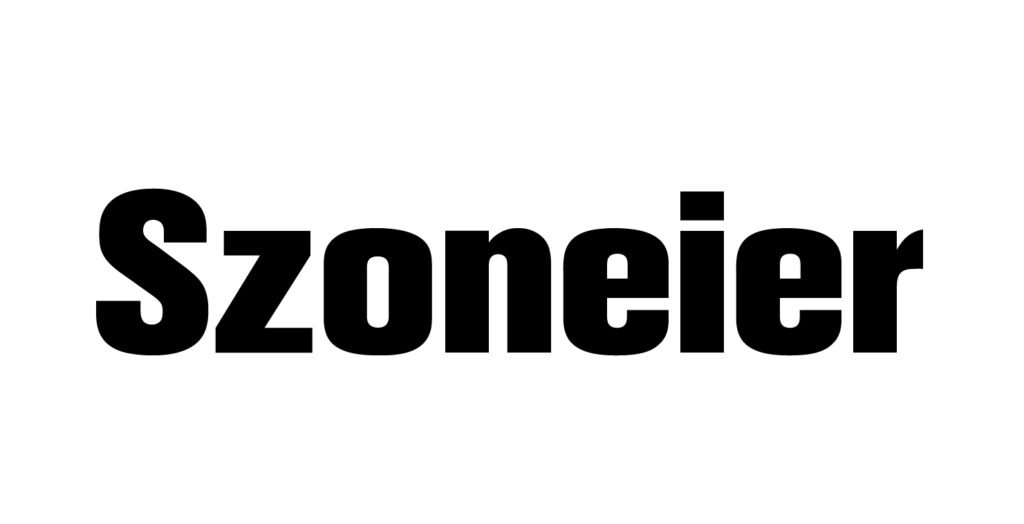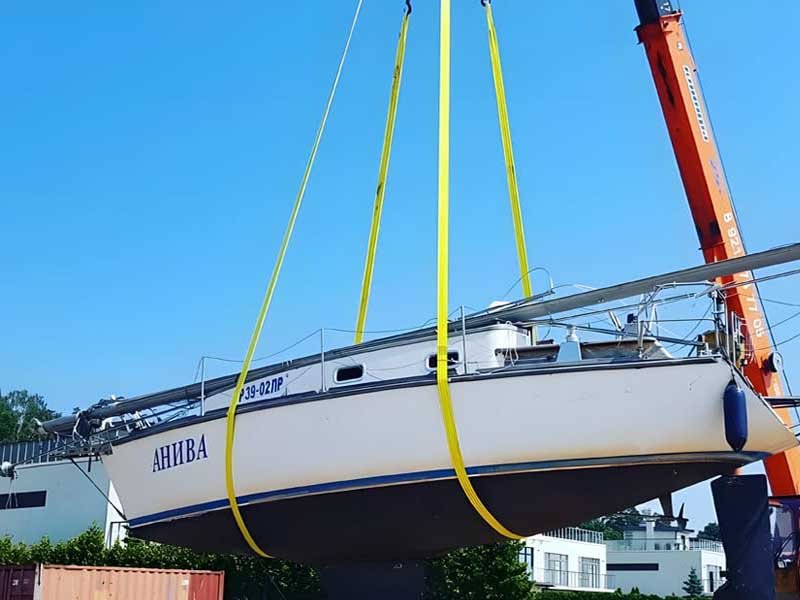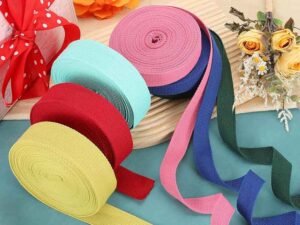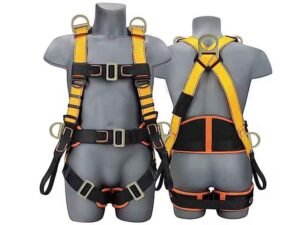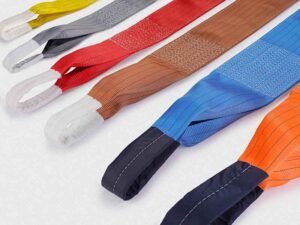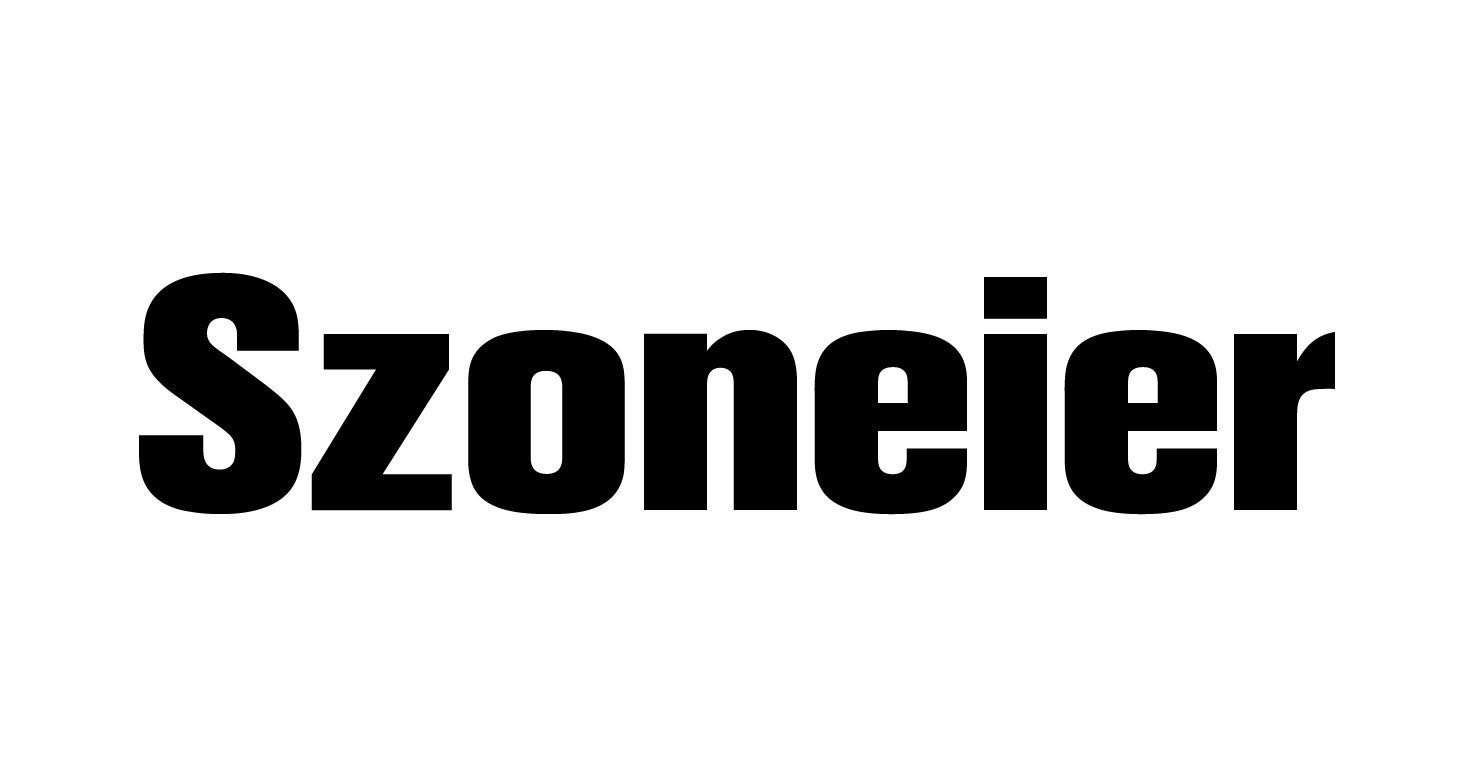In today’s fast‑paced industries, choosing the right lifting and safety equipment isn’t just about meeting regulations—it’s about keeping people safe and operations smooth. Webbing slings have emerged as a versatile solution, trusted across sectors from heavy‑duty construction sites to adventurous outdoor expeditions. Whether you’re hoisting steel girders or securing kayaks, chances are a webbing sling is involved.
Webbing slings are used primarily for lifting, securing, and supporting loads in industrial, construction, marine, and recreational contexts. Their flexibility, strength, and customizability make them ideal for precise load control, safety harnessing, and outdoor activities such as climbing and rescue operations.
But how did this humble strip of woven fabric evolve into an industry staple? Picture a crew on a wind‑swept offshore platform—cranes humming overhead—needing a sling that won’t damage delicate equipment, resist saltwater corrosion, and handle 5‑metric‑ton steel beams day in, day out. Enter the polyester and nylon heroes of the webbing world. Ready to see slings in action? Let’s dive into seven core use cases—and by the end, you’ll know exactly which sling you need for your next project.
What Are Webbing Slings and How Are They Constructed?
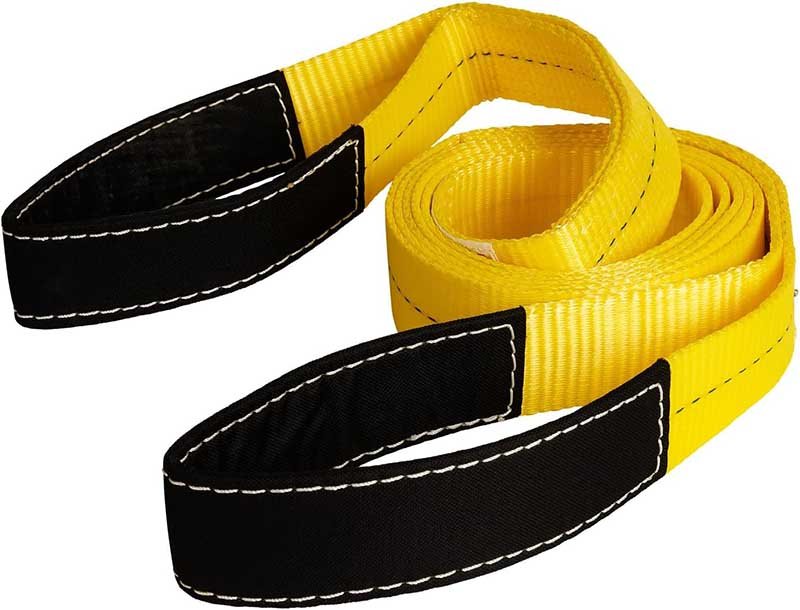
Webbing slings are flat, woven straps made of high‑strength fibers—commonly polyester, nylon, or polypropylene—designed for lifting and securing loads. They feature reinforced eyes or loops at each end, with stitching patterns rated for specific load capacities, ensuring safe and efficient load handling.
Webbing slings trace their roots to early maritime rigs, where sailors needed lightweight, non‑corrosive alternatives to steel chains. Today’s slings are precision‑engineered composites, typically woven on computerized looms to maintain uniform strength and flexibility. Let’s break down the main construction elements:
Fiber Type:
- Polyester: Low stretch, UV‑resistant, ideal for precise load placement in construction.
- Nylon: High elasticity (up to 15% stretch), excellent shock absorption—perfect for dynamic lifting in ports or machinery moves.
- Polypropylene (PP): Lightweight, floats on water, budget‑friendly for marine tie‑downs.
Weave Patterns:
- Plain Weave: Balanced strength, moderate flexibility.
- Twill Weave: Higher abrasion resistance, used in heavy industrial slings.
- Double‑Layered: Increased load capacity, often in critical‑lift scenarios.
Reinforced Eyes and Stitching:
- Box‑X Stitch: Standard pattern rated for 100% of sling capacity.
- Basket Weave: Wraps the load, doubling the sling’s effective capacity.
- End Fittings: Heat‑sealed edges prevent fraying; loops may be protected by polyurethane sleeves for abrasion resistance.
Coatings & Treatments:
- UV Stabilizers: Extend life in outdoor use.
- Water‑Repellent Finishes: Prevent fiber swelling and mildew in marine environments.
- Color Coding: Simplify capacity identification (e.g., green = 2 ton, yellow = 3 ton, etc.).
Critical Perspective:
While webbing slings excel in versatility, always match the fiber and design to the job. For instance, polyester is superb for construction cranes due to minimal stretch, but nylon’s elasticity can be dangerous in static lifts where sudden load shifts occur. On the flip side, nylon slings are the go‑to for shock‑loading scenarios—like forklift placements or dockside lifts—where absorbing kinetic energy protects both cargo and hardware.
Which Materials and Weaves Make the Best Slings?
The best sling material depends on application: polyester offers low stretch and UV resistance; nylon provides superior elasticity and shock absorption; polypropylene is lightweight, floats, and resists chemicals. Weave types—plain, twill, or double-layered—further tailor performance for abrasion resistance, load capacity, and flexibility.
Choosing the right material and weave is crucial for safety, durability, and cost‑effectiveness. Below is a comparison table summarizing key properties:
| Material | Stretch (%) | UV Resistance | Chemical Resistance | Typical Use Cases |
|---|---|---|---|---|
| Polyester | 3–5 | High | Moderate | Construction, cranes, wind |
| Nylon | 12–15 | Moderate | High | Shock loads, dockside lifts |
| Polypropylene | 5–8 | Low–Moderate | Excellent | Marine, chemical plants |
Polyester Slings:
- Strengths: Minimal elongation ensures predictable lifts. High tensile strength per fiber weight. Excellent UV stability makes it a favorite on sun‑exposed sites.
- Limitations: Moderate chemical resistance means avoid acids/alkalis. Not ideal for submersion applications.
Nylon Slings:
- Strengths: Elasticity mitigates dynamic forces during load pick‑up, reducing shock to equipment. Superior chemical resistance handles oils and solvents.
- Limitations: Absorbs water, leading to strength reduction in wet conditions—requires drying before critical lifts; moderate UV resistance demands protective coatings.
Polypropylene Slings:
- Strengths: Floats on water—essential for offshore rigging and water rescue. Cost-effective for one‑off or light‑duty jobs.
- Limitations: Lower UV resistance—prone to rapid degradation if left in sunlight. Lower maximum load capacities than polyester/nylon.
Weave Considerations:
- Plain Weave: Balanced and widely used; good for general purpose.
- Twill Weave: Denser, higher abrasion resistance; best in high‑friction environments like steel mills.
- Double‑Layered Slings: Two plies of fabric stitched together; nearly doubles capacity and extends lifecycle in heavy‑lift operations.
Critical Insight:
A one‑size‑fits‑all approach rarely works. For example, using a polypropylene sling for overhead crane work in a chemical refinery could compromise safety due to chemical exposure and UV damage. Conversely, spec’ing a premium nylon sling for a temporary dock tie‑down might inflate costs. Smart buyers match material, weave, and protective finishes to the precise operating conditions.
What Are the Primary Industrial Uses for Webbing Slings?
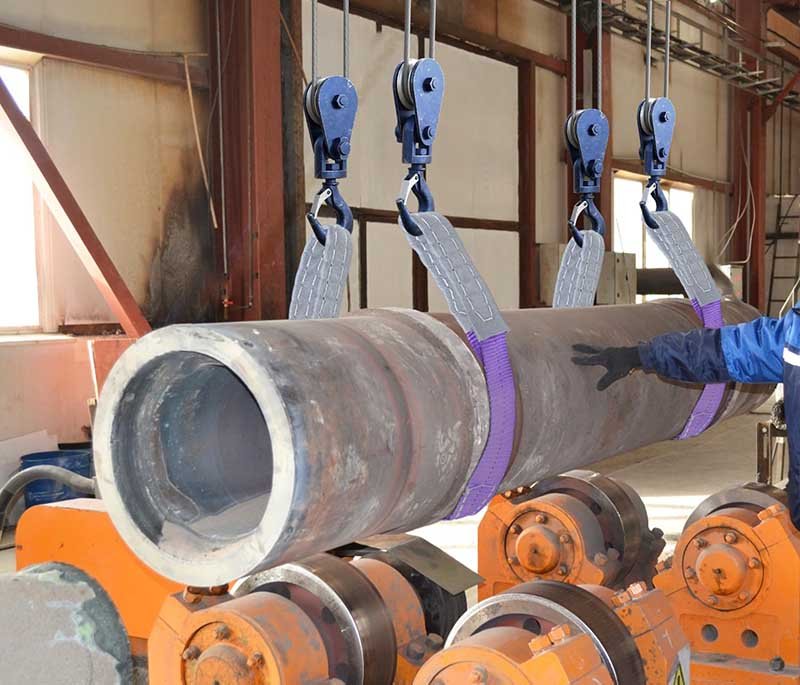
Webbing slings are indispensable in industrial settings for hoisting lumber, steel beams, machinery, and heavy equipment. Their lightweight, non‑abrasive nature protects loads while enabling accurate placement, making them ideal for construction, manufacturing, and shipping applications.
In manufacturing plants and construction sites around the world, webbing slings streamline operations and enhance safety:
Construction & Engineering:
- Steel Erection: Polyester slings lift I‑beams, girders, and panels without scratching finishes. Their low stretch allows cranes to place heavy elements within millimeters of tolerance.
- Precast Concrete: Double‑layered slings cradle concrete sections, distributing stress evenly to prevent cracking.
Machinery Installation:
- Precision Placement: Nylon’s elasticity cushions dynamic loads when lowering chillers, generators, or turbines onto narrow foundations. Anti‑skid coatings maintain grip on polished surfaces.
- Maintenance Overhauls: Lightweight sling kits are portable, enabling maintenance crews to rig and de‑rig bulky equipment in confined spaces.
Shipping & Logistics:
- Container Loading: Webbing slings feed easily through container lashing rings, securing cargo against shifting during transit.
- Factory Floor to Yard: Single‑eye slings connect to forklifts, speeding material handling without damaging pallet wraps or shrink film.
Energy & Utilities:
- Wind Turbine Blades: Long‑length polyester slings cradle delicate composite blades, resisting abrasion and providing uniform pressure distribution.
- Pipeline Sections: Custom‑cut nylon slings wrap around pipe lengths, facilitating safe lifts even in offshore conditions.
Case Study (Data Table):
| Industry | Typical Sling Type | Avg. Lift Weight | Incident Rate Reduction |
|---|---|---|---|
| Commercial Construction | Polyester double‑layer | 5–20 tons | 45% compared to chains |
| Shipbuilding | Nylon with abrasion sleeve | 2–10 tons | 30% fewer load shifts |
| Wind Energy | Polyester coated sling | 1–5 tons | 50% less blade damage |
Critical Perspective:
While load charts and safety factors guide selection, real‑world variables—like temperature extremes, exposure to chemicals, and operator proficiency—can shift risk profiles. For instance, a seemingly adequate polyester sling in a desert construction fold might lose 10–15% of its capacity under prolonged UV exposure. Mitigation? Regular sling inspections and rotation schedules.
How Do Webbing Slings Enhance Safety in Lifting Operations?
Webbing slings enhance lifting safety by providing high‑strength, flexible support that absorbs shock, distributes load evenly, and prevents surface damage. Color‑coded and labeled for capacity, they simplify inspection and reduce human error in rigging tasks.
Safety improvements from webbing slings stem from both material properties and smart design:
Shock Absorption:
- Dynamic Loading: Nylon slings stretch under sudden loads, converting kinetic energy into elastic potential—dramatically reducing peak forces on cranes and rigging hardware.
- Preventing Load Swing: Elastic recovery dampens oscillations when loads are started or stopped, minimizing swing‑related accidents.
Even Load Distribution:
- Wide Surface Area: Unlike wire rope or chain, the broad contact area of flat slings prevents stress concentrations that can crack brittle materials or dent polished surfaces.
- Soft Edges: Fabric edges won’t cut into loads or rigging points, reducing abrasion or gouging.
Simplified Inspection & Certification:
- Color Coding & Labels: Industry standards mandate visible capacity and inspection tags; quick visual checks detect UV damage, fraying, or chemical etching before failures occur.
- End-of-Service Indicators: Specialty slings incorporate core‑exposure indicators—when the inner fibers peek through, it’s time for retirement.
Ergonomic Handling:
- Lightweight: Operators can carry multiple slings without mechanical aids, reducing strain injuries and speeding tea‑break assembly tasks.
- Low Memory: Fabric slings won’t retain kinks or coils like wire rope, ensuring consistent performance each use.
Critical Insight:
Even the best‑designed sling can fail under misuse. Common errors include over‑loading (exceeding working load limits), side‑loading (loads placed outside the sling’s design orientation), and inadequate protection over sharp edges. Mitigation tactics involve:
- Edge Protectors: Polyurethane sleeves or corner pads to prevent cut‑through.
- Rigging Training: Operators must tag‑read capacities and follow angle‑factor charts—for instance, a 60° basket hitch doubles capacity, but at 120° the capacity drops to 50%.
Which Types of Webbing Slings Are Ideal for Outdoor and Recreational Activities?

For outdoor pursuits—rock climbing, rescue, rafting—nylon slings offer flexibility and shock absorption, while polyester resists UV and water. Polypropylene’s buoyancy makes it perfect for water sports. Reinforced weaves and protective coatings tailor slings to each activity’s demands.
Beyond the factory floor, webbing slings find a second life in adventurous settings:
Rock Climbing & Mountaineering:
- Nylon Daisy Chains: Adjustable loops for quick attachments and belay setups. Stretch cushions falls and reduces impact force on anchors.
- Lightweight Polyester Runners: Minimal elongation ensures accurate placement; UV‑stable for sun‑blasted crags.
Rescue & Emergency Services:
- High‑Visibility Colors: Polyester slings dyed in neon hues enhance visibility in smoke or low‑light conditions.
- Chemical & Heat Resistance: Nomex‑blended weaves resist flames and corrosive rescue fluids.
Water Sports & Rafting:
- Polypropylene Slings: Float on water, unaffected by prolonged wetting. Ideal for splicing into kayak tie‑down systems.
- Quick‑Dry Coatings: Mold‑inhibiting finishes prevent mildew and odor in damp environments.
Aerial Performance & Rigging:
- Double‑Layer Polyester Slings: Support performers in aerial silks, spreading body weight to prevent fabric tears.
- Dynamic Shock Absorption: Nylon slings reduce stress on anchors when performers drop or spin.
Critical Perspective:
Outdoor slings face unique wear factors—abrasion on rock surfaces, chemical exposure in rescue, saltwater ingress in marine settings. Regular washing with mild detergent, visual inspections for UV‑bleached fibers, and rotation out of service after manufacturer‑specified cycles (often 2–3 years for active use) extend safe lifespans. Always consult UIAA or CE standards for certified climbing slings, and CSA/ANSI codes for rescue gear.
How Do You Choose the Right Sling for Your Load Capacity?
Selecting the correct sling involves matching working load limit (WLL) to your maximum load, considering hitch type, sling angle, and safety factor. Always apply manufacturer‑specified derating charts for basket and choker hitches, and choose a sling with a WLL at least 25% above your heaviest lift.
Sizing a sling isn’t guesswork—it’s a precise calculation:
Working Load Limit (WLL):
- Based on minimum breaking force (MBF) divided by safety factor (commonly 5:1). A 5 ton MBF sling yields a 1 ton WLL.
- Tip: Always select a sling whose WLL exceeds your heaviest load by at least 25% to account for unforeseen dynamics.
Hitch Types & Angle Factors:
| Hitch Type | Angle (°) | Capacity Factor |
|---|---|---|
| Vertical | 90 | 1.0 |
| Basket | 90 | 2.0 |
| Choker | 90 | 0.8 |
| Basket at 120 | 120 | 1.0 |
- Basket Hitch: Doubles capacity when angle ≤ 90°.
- Choker Hitch: Reduces capacity by 20%—useful for tight lifts but requires derating.
Sling Length & Stretch:
- Shorter slings have marginally higher capacity due to reduced stretch.
- For critical lifts, test elongation under known loads to confirm performance.
Safety Factors & Regulations:
- OSHA mandates periodic inspections and retirement after visible damage or 5 years of service.
- ANSI B30.9 and EN 1492 standards specify design, marking, and testing protocols.
Critical Insight:
Over‑specifying a sling (choosing far higher WLL than needed) can lead to unnecessary weight, cost, and handling difficulty. Under‑specifying is a recipe for disaster. Use load cells or test lifts when in doubt, and always record lift data as part of your equipment certification logs.
What Maintenance and Inspection Practices Ensure Sling Longevity?
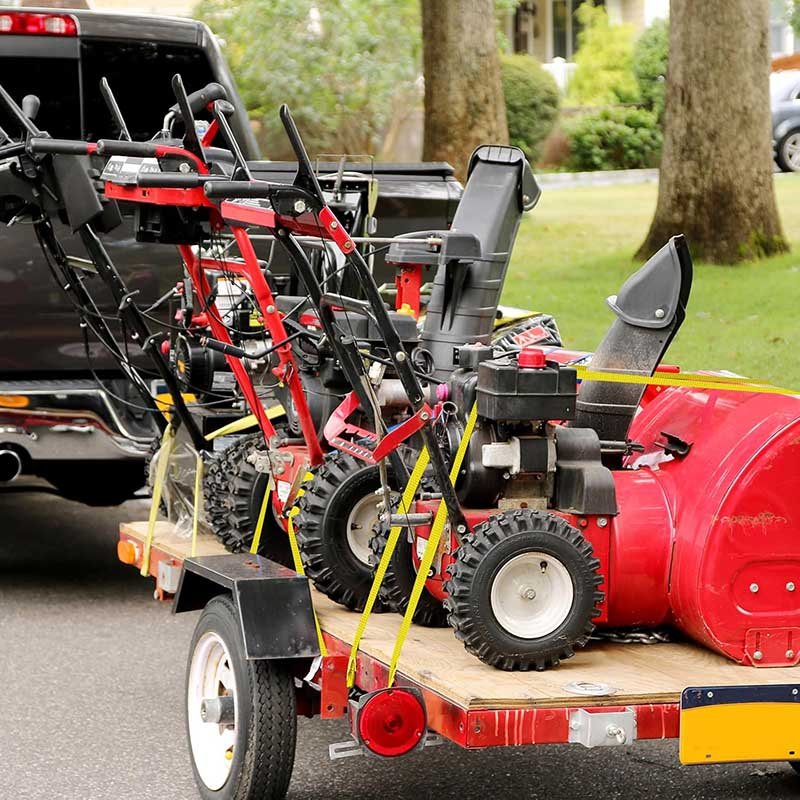
Regularly inspect slings for cuts, abrasion, UV damage, and chemical etching. Clean with mild detergent, dry away from direct sunlight, and store flat in a cool, dry place. Retire slings showing core exposure, fraying, or capacity‑label loss.
Daily Visual Checks:
- Look for discoloration (UV bleaching), frayed edges, broken fibers, or melted spots.
- Verify that capacity tags are legible and intact.
Monthly Detailed Inspections:
- Flex Test: Bend the sling over a smooth edge—broken fibers will protrude.
- Load Test: For critical‑lift slings, perform a proof load at 1.5× WLL under controlled conditions, recording any elongation.
Cleaning & Storage:
- Wash slings in lukewarm water with mild detergent; avoid bleach or solvents.
- Air‑dry horizontally—never tumble dry or expose to direct heat/UV lamps.
- Store in labeled, sealed racks or cabinets, away from chemicals or sharp tools.
Retirement & Disposal:
- Retire slings when inner fibers show through outer weave, or after 10 years regardless of apparent condition (per EN standards).
- Cut retired slings into unusable lengths and recycle if facilities exist; do not repurpose for lifting.
Critical Perspective:
Maintenance protocols are only as good as their execution. Many incidents stem not from equipment flaws but from skipped inspections or improper storage. Implement digital checklists and photo logs to ensure accountability—and consider RFID‑tagging slings for automated tracking of service history.
How Can Custom OEM/ODM Services Tailor Slings to Your Specifications?
Custom OEM/ODM services let you specify fiber type, weave density, eye configuration, protective sleeves, color coding, and branded labels. Szoneier’s advanced looms and quality systems produce slings matched exactly to your industry’s load requirements and aesthetic preferences.
Material Customization:
- Blend Ratios: Combine polyester and nylon fibers for balanced stretch and UV resistance.
- Specialty Fibers: Kevlar® or high‑modulus polyethylene (HMPE) for extreme abrasion and heat resistance.
Structural Variations:
- Multi‑Leg Slings: 2‑, 3‑, or 4‑leg assemblies for complex rigs, distributing loads across multiple points.
- Adjustable Daisy Chains: Quick‑lock ladders for precise length control in aerial or rescue.
Protective Features:
- Edge Guards & Sleeves: Polyurethane or leather patches at contact points to prevent cuts.
- Reflective Threads: Enhance visibility for night operations or roadside work.
Branding & Traceability:
- Custom Labels: QR‑coded tags linking to digital certificates and inspection history.
- Color‑Matched Webbing: Integrate corporate colors for private‑label products or safety coding.
Quality Systems:
- Batch Testing: Each lot undergoes tensile and elongation tests per EN 1492 and ASTM D524.
- Certifications: ISO 9001:2015 Quality Management, CE marking, and optional UL listing.
Critical Insight:
Custom slings represent an investment in safety and efficiency. Off‑the‑shelf slings may work for general tasks, but only bespoke solutions can address niche needs—like sub‑zero temperature lifting, chemical plant exposures, or brand‑specific identification in multi‑vendor operations. Partnering with a one‑stop source like Szoneier Webbing streamlines design, testing, and logistics, ensuring continuity and compliance across your supply chain.
Conclusion
From skyscrapers to climbing peaks, from warehouse floors to rescue missions, webbing slings play a pivotal role in modern lifting and safety operations. By understanding materials, construction, and application‑specific demands, you can choose—and maintain—the perfect sling for every job. Remember: proper selection, rigorous inspection, and customized features aren’t optional extras—they’re the foundation of safe, efficient, and cost‑effective workflows.
Ready to specify your custom webbing slings?
Contact Szoneier Webbing today for expert consultation, free design services, and fast sampling on low‑MOQ orders. Let us tailor slings that perfectly match your load, environment, and branding needs.
